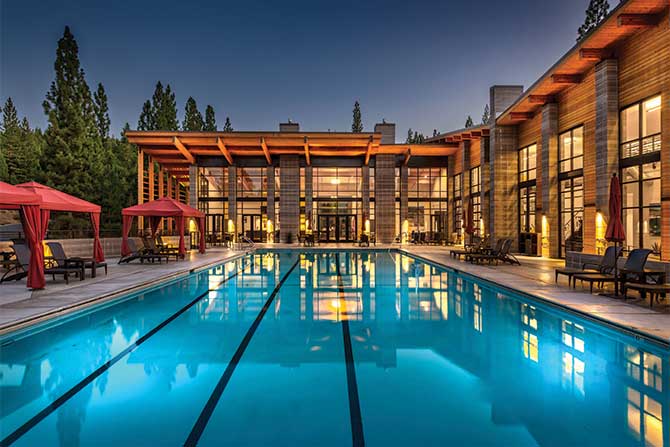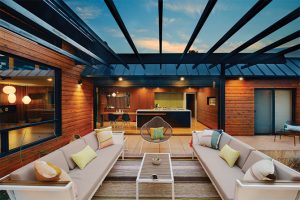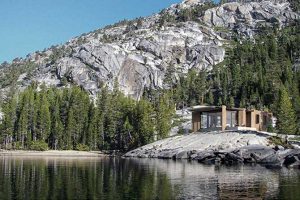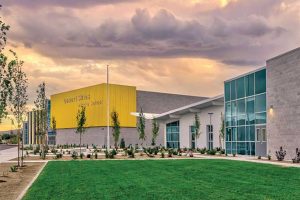By AIA Northern Nevada
CITATION
Architect: Cathexes
Contractor: McCuen Construction
Year Completed: 2018
Location: Clio, California
New ownership at the Nakoma Resort needed to address two vital issues for the near- and long-term success of their properties: the need for overnight lodging and the need to draw new interest by providing more recreation and leisure opportunities. Two buildings were conceived: the boutique hotel — Lodge at Nakoma, and the other was a recreation facility — Altitude.
The programming of Altitude was undertaken in concert with the ownership team to explore the possibilities of providing a diverse set of year-round recreational options in and around the facility’s site. Key programmatical elements were selected and located for their distinct functional attributes or essential connectivity either visually or by physical proximity. A breezeway connected the ‘active’ areas, including day care, climbing gym, fitness center and locker rooms. Consideration was taken to provide enriching and appealing views from treadmills, stationary bikes and the elevated yoga studio. The southern section of the building is more formal and meant for reception, lounging and dining. All areas of the building are connected to the central focus of the facility: the pool deck.
Integration into the site’s topography and providing a sense of prominence and arrival were essential to Altitude’s visitor experience. With dramatic scenery and views of distant mountaintops, the view angles were carefully considered early in the planning and site analysis phase. Locating the facility in terms of elevation and proximity to existing drives and access points was carefully considered while providing a generous pool deck and outdoor dining opportunities. Access to and views of the adjacent creek were vital while providing a sense of privacy on the pool deck for families from the nearby road.
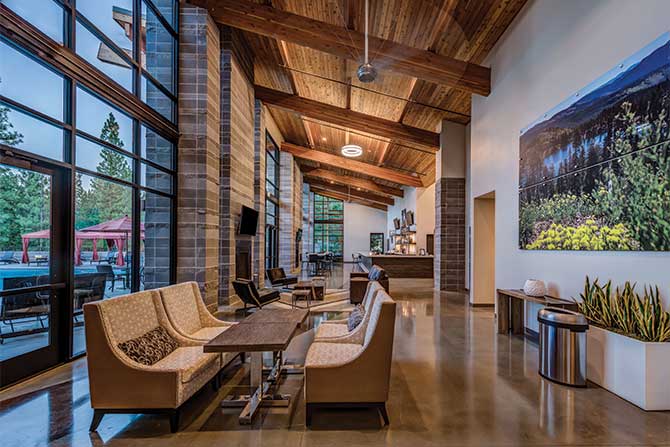
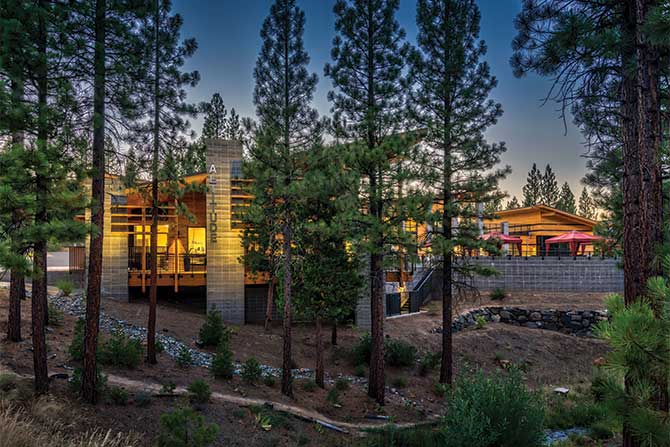
While the site conditions and geography greatly influenced Altitude’s character, two other essential influences informed the architectural approach: the culture of the Maidu (Native American people of Northern California, which call the mountains and valleys in the project area home) and the Frank Lloyd Wright Clubhouse nearby.
While respecting the beauty of the Wrightian forms and the Clubhouse’s presence a short distance up the hillside, Altitude does not mimic the formal design. Instead, it uses the importance of masonry, rhythm and the ‘fireplace’ primacy as a gathering point to create order and drama. The FLW building was designed for another site with a flatter topography. It was inspired not only by the local Maidu but also by Native Americans’ structures in the Midwest regions.
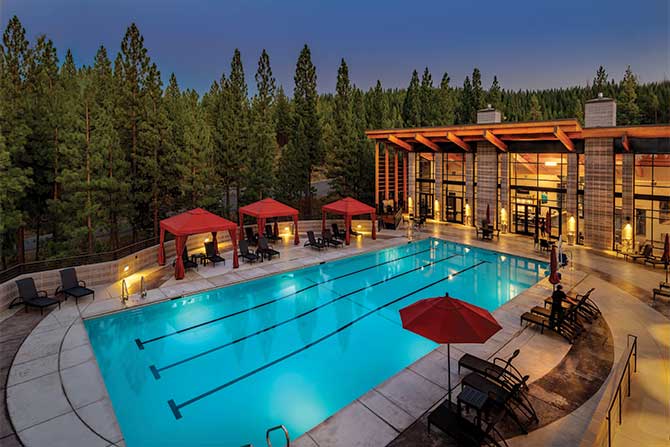
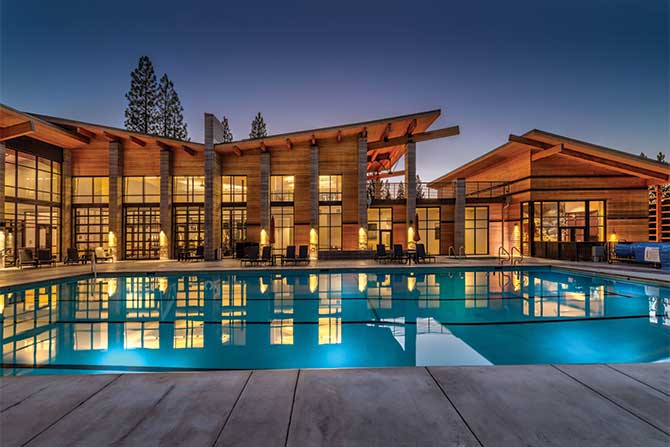
The beautiful and intricate Maidu baskets and bowls weaved together with function and aesthetics in mind found their way into shaping the pool deck and its rings and the interplay of color and material of the cladding. Symbiotically the habits and traditions of the Maidu fit well with the site and program. In the summer, the Maidu structures would be built so that the opening faced east to catch the morning sun, and the walls of the structure (often made of cedar bark) were closed to the harsh afternoon sun from the west. The ‘breezeway’ connecting the key features of Altitude along the north-south spine features large operable doors and a rhythm of glass facing east to the pool deck and the morning sun to provide early-morning light and warmth to the morning users of the Fitness Center.
Locating the project in a centralized location mitigated the need for a typical parking ratio, and indeed most visitors shuttle, walk or ride their bike to the facility. Western Red Cedar siding and soffiting is the primary material for its sustainable qualities and beauty. A highly efficient Variable Refrigerant Flow (VRF) HVAC system was chosen for its efficient moderating of the temperature swings, and envelope thermal values well above code requirements were achieved. The large openings were carefully chosen in location and design and glazed with thermal efficiency in mind. The natural lighting reduces the power demand, while the orientation and detailing reduce the amount of harmful glare in key areas. Locally-sourced materials reduced the amount of embodied energy, and local contractors were chosen where possible to reduce the amount of travel to the site and invest back into the local community.



